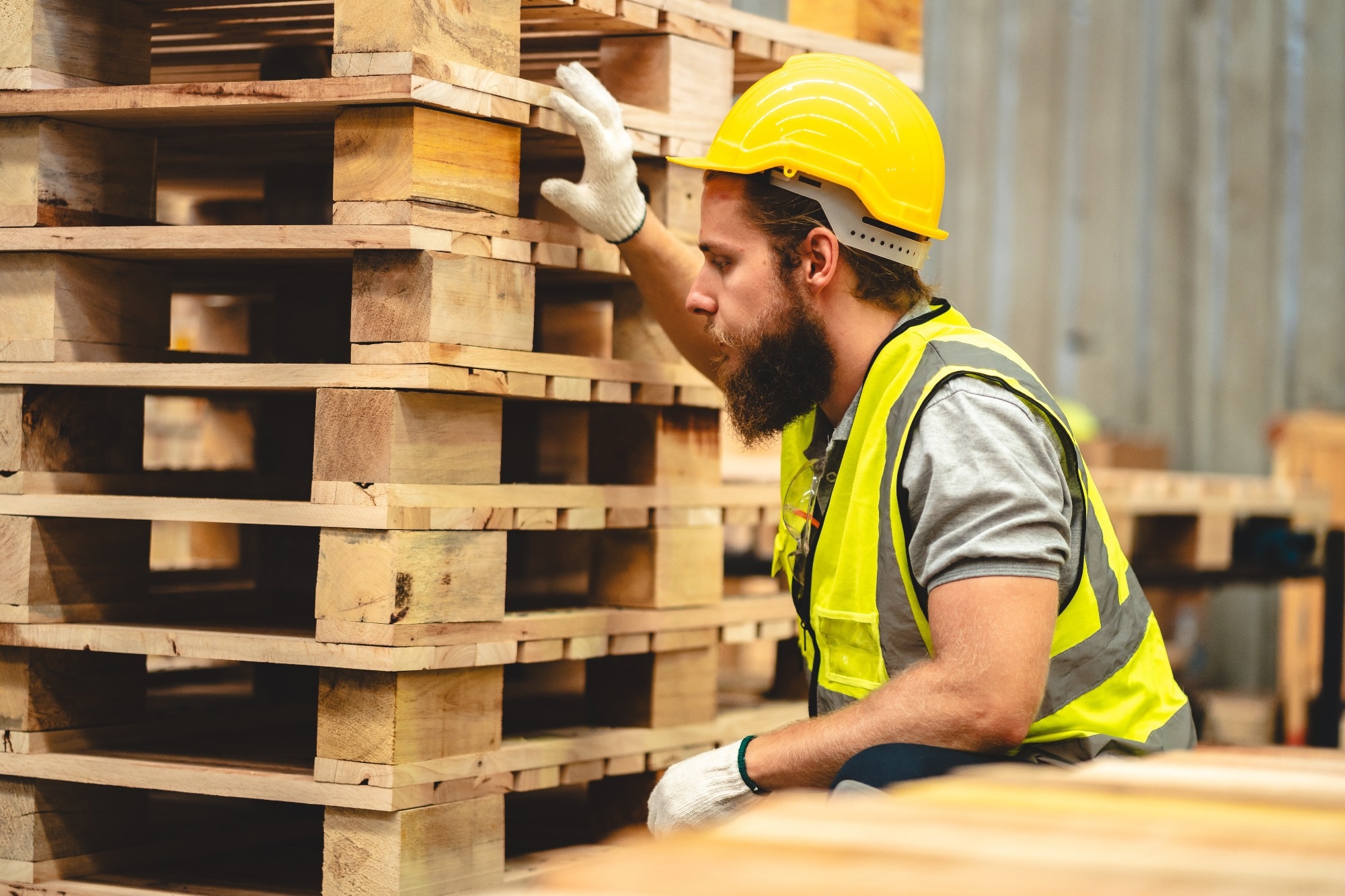Researchers have developed a low-cost IoT-based smart pallet system that uses barometric sensors to accurately track material locations across multiple floors on construction sites.

Study: IoT-altimeter in smart pallets for material tracking on multi-story construction sites. Image Credit: Chokniti-Studio/Shutterstock.com
This system offers a new solution to a longstanding challenge in construction logistics: efficiently locating and managing materials in complex, multi-level environments. By combining smart pallets with digital altimeters and long-range wireless communication, the approach enhances real-time visibility, reduces delays, and helps control project costs.
Advancements in Material Tracking Technology
The construction industry has struggled with the challenge of managing materials efficiently, particularly in multi-story buildings where resources are distributed across multiple floors. Traditional tracking methods are often labor-intensive and prone to errors, resulting in delays and increased costs. However, recent advancements in IoT technology have opened new opportunities for optimizing and making these processes more efficient.
IoT systems enable real-time monitoring through interconnected devices that collect and exchange data, facilitating better resource monitoring and management. The integration of digital altimeters, which utilize barometric pressure sensors to determine altitude, marks a significant step forward in this area. By measuring air pressure variations, these sensors can accurately identify the height of materials on different floors, enabling precise tracking.
This approach is beneficial in environments where traditional methods, such as radio-frequency identification (RFID) tags or optical markers, are ineffective due to the dynamic nature of construction sites.
Introducing the IoT-Based Material Tracking System
To put this idea into practice, the research team developed a complete IoT-based material tracking system tailored for vertical construction. The system uses standard Euro pallets equipped with digital barometric sensors to measure height. These sensors transmit data via LoRaWAN (Long Range Wide Area Network), which provides low-power, long-distance communication that remains stable even in challenging indoor construction environments.
To test the system’s reliability and real-world feasibility, the researchers designed experiments centered around a key question: Can IoT altimeters consistently and accurately track materials across multiple floors?
The study included both long-term controlled tests and real-world trials inside an office building. These tests helped the team evaluate sensor accuracy, signal stability, and overall system performance in realistic scenarios.
Key Findings: Impact of Using Novel Tracking System
The experimental results were encouraging. The barometric sensors achieved an average height deviation of just 0.2 meters - well within the margin needed to distinguish between floors in buildings with standard 3- to 4-meter floor heights.
Accuracy improved further with the addition of a calibrated base station, which provided a consistent reference point for the pallet-mounted sensors. Data transmission over LoRaWAN proved highly reliable, with zero packet loss even across multiple floors and through structural barriers.
Beyond technical performance, the system also demonstrated strong practical potential. Each smart pallet costs around €50 to produce and can operate for up to 113 days on a single battery, significantly reducing maintenance demands. By automating the tracking process, the system improves site organization, cuts down on material search time, and supports faster, more coordinated workflows.
Conclusion and Future Directions
These findings highlight the practical value of integrating IoT systems into construction logistics. Real-time tracking of materials across different floors allows teams to stay better aligned, anticipate bottlenecks, and make informed decisions about site operations.
Moreover, the data gathered by these smart pallets can feed into digital twin models - virtual representations of the construction site that reflect real-time conditions. This kind of integration supports more efficient project planning, resource allocation, and performance monitoring, paving the way for smarter, data-driven construction management.
While the study confirmed the system’s feasibility in controlled and pilot environments, the researchers emphasize the need for further field testing across a wider variety of construction settings. Future development will focus on improving sensor synchronization, extending battery life, and enhancing network coverage to support more complex or larger-scale sites.
Additional improvements, such as on-site charging stations or hybrid communication methods, could further increase the system’s long-term usability and value on construction sites.
Journal Reference
Gehring, M., & et al. (2025). IoT-altimeter in smart pallets for material tracking on multi-storey construction sites. Smart Construction, 2(3). DOI: 10.55092/sc20250023, https://www.elspub.com/papers/j/1937803706067210240.html
Disclaimer: The views expressed here are those of the author expressed in their private capacity and do not necessarily represent the views of AZoM.com Limited T/A AZoNetwork the owner and operator of this website. This disclaimer forms part of the Terms and conditions of use of this website.